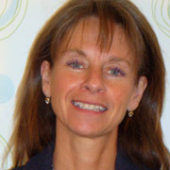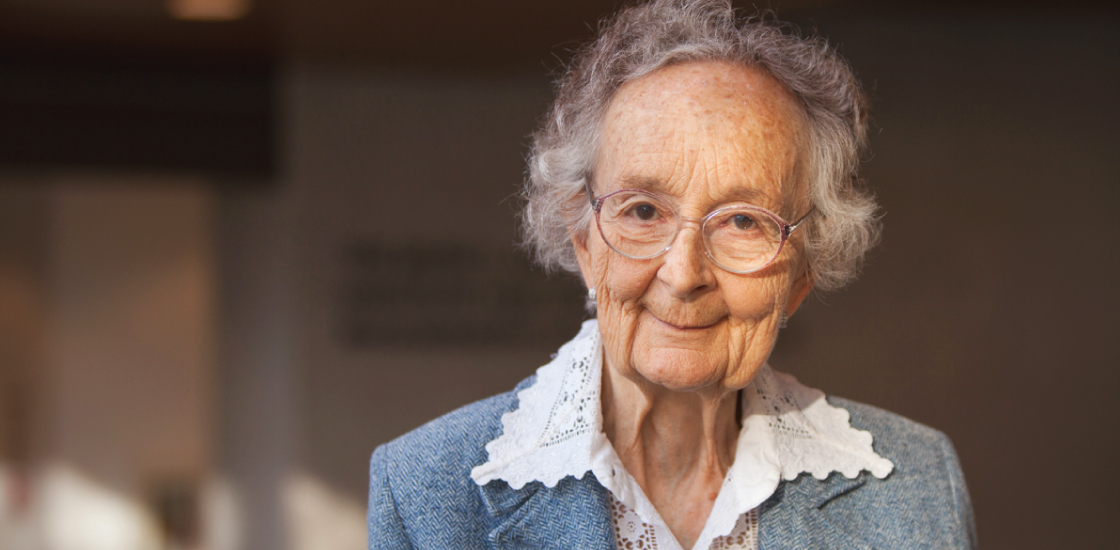THIS ARTICLE IS MORE THAN FIVE YEARS OLD
This article is more than five years old. Autism research — and science in general — is constantly evolving, so older articles may contain information or theories that have been reevaluated since their original publication date.

Isabelle Rapin, a child neurologist who spent more than 50 years working with people with autism, passed away 24 May. She was 89 years old.
Dr. Rapin — which is what we called her — was a dedicated teacher, a devoted mentor and a passionate scholar. Her lasting impact on autism research derives from the perspective on autism she gained in her clinical practice. She called autism “a disorder of the developing brain” — a provocative idea early in her career. Yet she emphasized that autism is a lifelong condition that affects children and adults alike.
Dr. Rapin’s work with psycholinguist Doris Allen at the Einstein Therapeutic Nursery in the 1980s represents one of the earliest versions of an autism intervention not just for children, but also their parents. This approach is at the heart of some of today’s most promising therapies for young children with autism.
But I believe her most significant contribution has been her mentorship and guidance of other researchers in the field, including me.
Immersion therapy:
Dr. Rapin received her medical degree in Lausanne, Switzerland, where she was born. She moved to New York City in 1953 for an internship in pediatrics at Bellevue Hospital, and later completed her residency at Columbia-Presbyterian Hospital. In 1958, she took a faculty position at the Albert Einstein School of Medicine, where she worked until she retired five years ago.
During her career, she founded the hospital’s Child Neurology Service and Fellowship Program, the training grounds for the next generation of child neurologists. She was also a founding member of the Child Neurology Society and the International Child Neurology Association. She authored more than 135 academic papers and 75 book chapters.
I met Dr. Rapin in New York in the summer of 1988. I had flown there from Brussels, where I was working as a clinical psychologist at Cliniques Universitaires-Erasme. I wanted to gain research experience in learning disorders, an interest of hers. Henri Sliwowski, head of child neurology at Cliniques Universitaires-Erasme, had set up the meeting.
After a short conversation in French, Dr. Rapin sent me to her administrator to complete the paperwork for a one-year fellowship in her lab. I extended my stay for a second year before returning home to Brussels.
It wasn’t long, however, before I was back in New York for graduate school. Dr. Rapin was not my advisor, but she helped me recruit families for my research.
I would go to her clinic every Friday morning along with several other graduate students. This was the highlight of my week. We would watch her examine a child. She was very animated and playful with the children, and enjoyed demonstrating how to conduct a complete clinical exam. Then we would listen to her discussions with the attending physician and the child’s parents about the child’s medical history, diagnosis and treatment.
She would grill us in our own area of research (mine was cognitive function and communication) about facts relevant to the current case. She had an encyclopedic knowledge of her own that she was eager to share.
At the end of the session, she would say, “Well, my friends, now go to the library and read.”
No limit:
At Dr. Rapin’s recommendation, I attended seminars and conferences, and audited classes. She knew I was shy, so she made sure to introduce me to her colleagues. I vividly remember, one day in the early 1990s, squeezing into a taxi with her and several members of her lab in Orlando, Florida, after an International Neuropsychological Society symposium on executive functions — I was practically sitting on her lap.
There was no limit to what she was willing to do for her students; her demands had no limit either. She recommended that I get a Ph.D. and a New York State psychology license; I obliged. She then hired me as her postdoctoral fellow to study motor stereotypies in autism. She involved me in several collaborative projects that helped me to develop my own network within the autism research community.
For several years, we drove monthly to Hartford, Connecticut, to discuss data from the first longitudinal, multicenter study of subgroups of children with autism. She led the pioneering study, which followed about 300 children with autism from ages 3 to 9. When it was time to write up the data, she taught me how to trim a rambling introduction and to clean up my French-tinged prose.
Dr. Rapin was an amazing lecturer. I will always remember her classic, sophisticated look, or ‘allure,’ as we say in French. And her fascinating talks wove together compelling anecdotes from her clinic with brilliant scientific arguments, such as the case for the contribution of genetics to autism.
Mother figure:
I was privileged to develop a relationship with Dr. Rapin, and to share her suite of offices at Einstein before she retired (or, I should say, before she moved her office to her country house in Red Hook, New York). She recycled paper and rubber bands and worked through lunch. We always took the long subway ride instead of a taxi to lectures or meetings in Manhattan. But these were also precious moments to talk about concerts at Bard College, an art exhibit at the Metropolitan Museum of Art, French literature, trips to Europe or even fashion.
We sometimes spoke about family, raising our bilingual children and the challenge for women to pursue a career and never give up a passion. Her passion was teaching, both in the clinic and in the lab. We agreed that it was important for clinicians to conduct research and for researchers to meet people with autism and their families.
As a child neuropsychologist, I was grateful for the opportunity to help Dr. Rapin develop seminars on neurodevelopmental disorders for child neurology residents at Einstein. We divided the course: She would teach students about the neurology of neurodevelopmental conditions one week; I would discuss the tests used to diagnose those conditions the next.
I feel honored to write this account, and yet I wish this sad honor had not come so soon. Dr. Rapin taught me and so many of her students to be curious, thorough, systematic and detailed in our scientific investigations. She also taught me, as a young woman in a foreign country, to never give up.
Our European background may have brought us closer, Isabelle. But it was only a few days ago that I read that Juliette was your middle name. It was my mother’s name, too.
Sylvie Goldman is assistant professor of neuropsychology at Columbia University Medical Center.
With additional reporting by Jessica Wright.

By joining the discussion, you agree to our privacy policy.